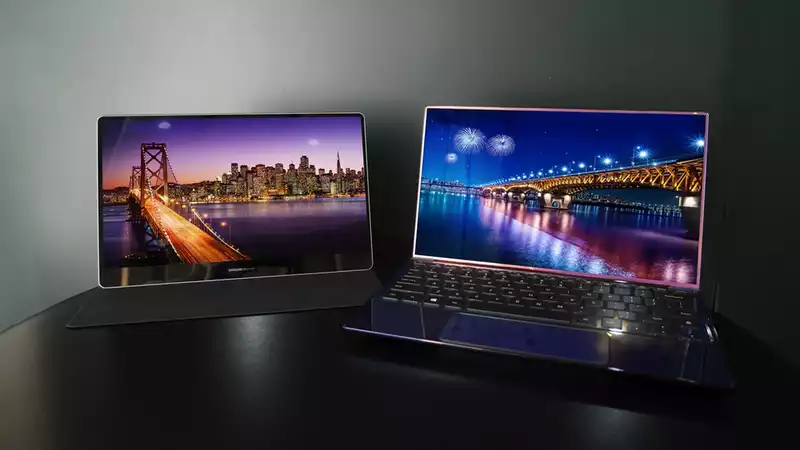Samsung Display, Samsung's display subsidiary, has announced its intention to begin producing 90-Hz OLED panels for laptop PCs in March. While many gaming laptops currently offer screens with higher refresh rates, Samsung believes that 90 Hz on an OLED panel will provide response performance comparable to 120 Hz in the LCD format.
According to DisplaySpecifications, the initial focus will be on 14-inch panels produced in "very high volumes." The resolution of the panels has not been disclosed. Other specifications, such as peak brightness, color coverage, and measures to mitigate OLED burn-in problems, have not yet been discussed.
Regarding a comparison of OLEDs and LCDs with respect to response, Samsung has stated that the blurriness of the image on an OLED panel at 90 Hz is comparable to that of an LCD operating at 120 Hz.
In many ways, OLED panels are particularly well suited for laptop computers. That's because the effective per-pixel illumination of OLEDs is far more efficient than the full-panel backlighting of a typical LCD. Even mini-LED LCD technology, with its thousands of local dimming zones, is less efficient than OLEDs in this regard.
It is unclear when laptops with these new panels will be available. Production of the panels will begin in March, so expect them to be available later this year.
The big problem, of course, remains the pesky problem of OLED burn-in. This problem is caused by images that remain on the screen for long periods of time, such as the Windows taskbar, and causes sub-pixel degradation because the blue sub-pixels are less durable in RGB OLED displays. The result is a constant ghost-like image, regardless of what is being displayed.
In our experience with daily use of OLED panels on Alienware laptops over several months, burn-in has not been a problem. Whether this will continue over several years is a more difficult question. However, the responsiveness, outstanding contrast, and efficiency of OLEDs certainly make them an attractive proposition in notebooks.
Similarly, OLEDs still have a lot of potential, as microLEDs seem years away and mini-LED panels undoubtedly still suffer from many of the longstanding shortcomings of LCD technology. Furthermore, Samsung's plans to "mass produce" these panels could make them relatively affordable, as opposed to for the most expensive laptops. 90Hz OLED gaming laptops? Yes, please, please, please.


Comments